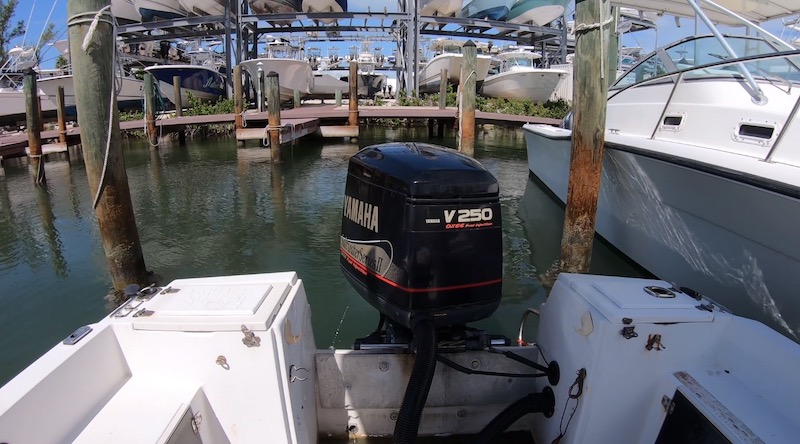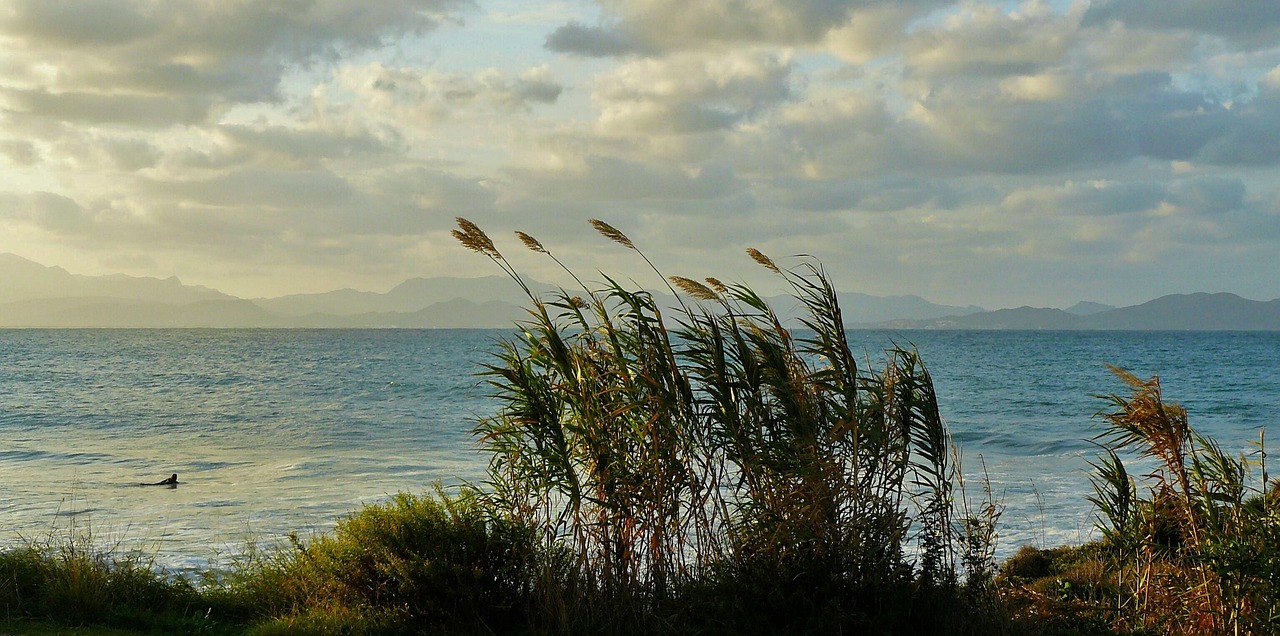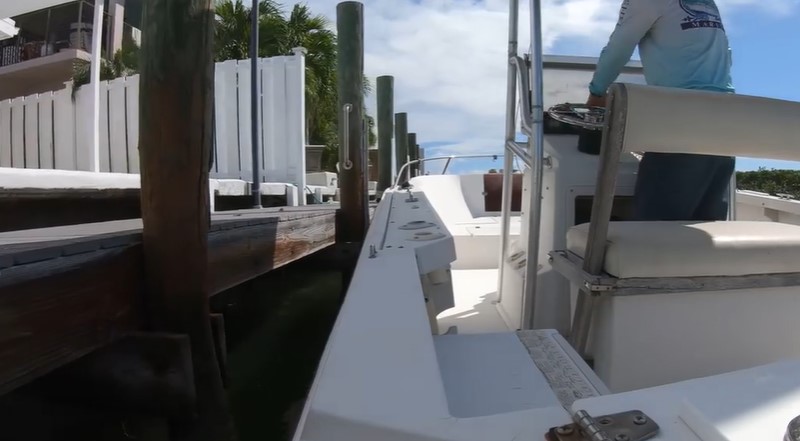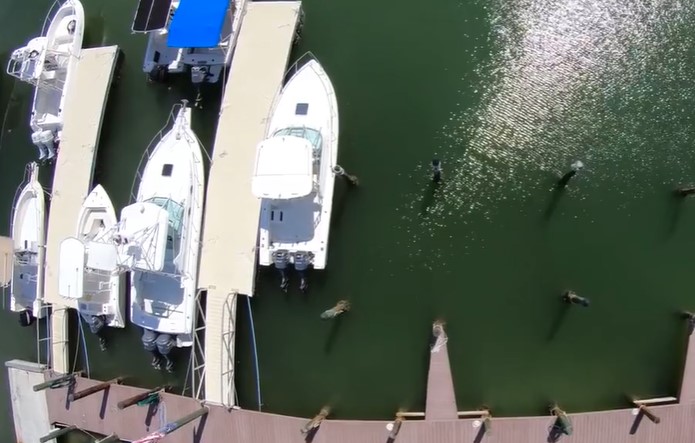How to Dock Your Boat Safely
Have you ever come across one of the many boat docking fail videos on YouTube? Or been at the boat ramp and watched a disaster unfold before your eyes? If you have, you probably wondered to yourself, how do I avoid being “that guy?”
Well, this is the best guide to learn how to dock your boat safely! There are three major things that you need to know about, and how to react to when docking a boat. Wind, Current, & Gear position and the effects they have on your boat will determine whether you can dock it safely or not.
Here are the easiest to understand instructions and things to know about that will allow you to handle your boat like a pro!
Gear Position & Angle of the Steering
Understanding Gear Positions & Speed
There is a well-known saying that most people know that goes, “never approach the dock faster than you want to hit it.” Our experience makes us agree with this saying! Which is why you should understand the best gear position when docking your boat is neutral.
You should never go full throttle to maneuver the boat. You are more likely to lose control of the boat at high speeds. Also, you will cause much more damage if you bump into something at high speeds compared to slow speeds.
Which is what makes neutral so important. You want to get into the habit of always returning to neutral after going into gear.
You want to use short bursts of throttle to build or maintain your boat’s momentum. Then use this momentum to gently guide your boat into the dock.
Otherwise, keep the gear in neutral. Ideally, the boat should spend more time in neutral than in forward and reverse gear. This will keep you from building too much momentum and allow you to let the boat glide across the water.
Giving you the ability to see where you are headed. Bringing us to some steering.

Knowing The Angle of Your Engine or Rudder
The angle of your engine or rudder is very important when trying to slip your boat into a dock. When trying to parallel park, you don’t want to come in at a right angle to the dock.
Instead, you want to be at a slight angle to the dock – almost parallel with it. We will discuss the proper angle at which to come into the docks in much detail as you read on.
Just remember to keep your eye on the engine and think about the direction in which it is pointing. This is going to be the guiding force in which direction the boat is going to go.
Floating Vs. Driving
When guiding your vessel into a dock or slip. It usually helps to think you are “floating” the boat into the slip rather than “driving” into it.
You want to spend more time in neutral than either forward or reverse gear. Remember, you should use the momentum of the boat to guide it into place.
When you think about driving, you think about brakes. Well, there aren’t any brakes on a boat! Which is why thinking about floating while you are driving it, will help you to think about where the boat is going to go.
Another thing to keep in mind is that you should not turn off the engine until you tie the lines. You never know when you might need to make some small adjustments to keep the boat safe in the dock. Once you tie all the lines securely, you can kill the engine.
Wind
Understanding The Effect of the Wind Direction
We need to know which way the wind is blowing to judge which way the boat will go as well. A good way to do this is to look for flags or the leaves on trees. Many docks have flag-posts on them to aid in maneuvering your boat safely.
Once you determine the wind direction, you generally want to make your turns going into the wind. This makes your boat a lot easier to control. That is because the wind is going to be pushing the boat in the direction it is blowing.
So, if you turn with the wind, it will cause the boat to overturn. Blowing you into things that you don’t’ want to be blown into. When turning against the wind, the wind will slow the momentum of the boat, but you won’t overturn it.
You can actually use the wind as a tool to dock. If you are in luck, the wind might be pushing you toward the dock. Put your boat in neutral and only use small bumps of forward or reverse gear to maneuver where necessary.
When the wind is pushing you away from the dock, try looking out for wind-blockers (like a big docked boat) to make the docking easier. If you can find a spot that is a little protected to cut the wind down. That always helps out.
The Type of Boat You Are Operating
The degree to which wind affects your boat handling also depends on the type of boat you are operating. Cabin cruisers or boats with big biminis on top are a lot more difficult to control because their larger surface area means that wind has more boat to push.
Whereas, smaller boats have a less-pronounced effect. A single-engine boat can be much harder to maneuver in wind as well, rather than a boat with multiple engines. Boats that have twins, trips or quad engines.
No matter what your configuration is – it allows you to split the control handles and turn the boat in the water. Say, for example, you have a twin-engine boat. If you put the left engine in reverse and the right engine forward.
This will cause the engines to pull water on the left side and pushing it out the right. Which will turn your boat counter-clockwise. If you put the right engine in reverse and the left in forward, you can rotate your boat clockwise.
This is a nifty trick to help maneuver your boat into that perfect angle when you want to stick the boat in a tight spot.
For more information about engine types and boats, you should read our articles about What’s The Best Boat For Beginners and Inboard Vs. Outboard: Which Is Right For You!

Currents
The Affects the Currents Have on the Boat
Currents have more or less the same effect as wind does on the boat. They both try to take the boat in the same direction they are going.
As with the wind direction, you can also use currents as a tool to guide the boat and help in docking. Unlike wind, though, you cannot use other boats to block the current. When docking, your boat should be in the direction of the current.
The current is going to carry the boat wherever it is going. Just being aware of which way the current is going will help you when approaching the dock.
Currents Vs. Wind
Be mindful of the terminology though. The direction of current flow refers to where the water current is going. Whereas the direction of wind is the direction it is coming from.
This means that a westerly wind and an easterly current are going the same direction – West to East. This can confuse many of us if we don’t take the time to think about it.
Where Are You Docking?
Docking Sideways
When docking sideways, pull your boat parallel to the dock. A few feet away, you can put your boat at a slight angle to the dock, under 45 degrees. Use short bursts of forward gear to build momentum and have the bow of the boat almost touch the dock.
Then, turn the engine the opposite way and put it into reverse to pull the stern in. Presto! Just tie your lines and you are good to go.
When docking sideways, you might need to park between two already docked boats. Don’t worry – the same method applies here as well.
You need to pull up parallel to the first boat and angle your bow toward the dock. The rest of the steps are the same as mentioned above. The only thing you need, apart from the knowledge, is confidence.
You can build confidence by practicing parking your boat in an empty dock. Once you gain this confidence, your next sea adventure will be much more enjoyable.

Parallel Docking
If going into the wind, pull up straight to the dock. When you’re about twenty feet away from the dock, turn the engine hard to the outside of the dock and let the boat float toward it.
When you get five feet away from the dock, turn the engine the opposite way, and put the boat in reverse.
This will pull the stern towards the dock. Now you can tie your lines and kill the engine.

Finger Slip Docking
When it is windy, it is very useful to have a wind-blocker to help you dock into a finger slip. You can essentially use the same technique as the one used in parallel docking in windy conditions.
However, you might not always be this lucky. If there is no boat docked in to block the wind, you might need to do things differently.
If you’re going against the wind, you should pull past the slip and turn the boat around. Now that you are going with the wind, you can maneuver your boat more easily. Begin the turn before the slip you want to turn into.
This will pull the bow into the wind and turn your boat sideways. The wind will push your boat parallel to the slip and you can simply back into it.
Pulling Onto a Trailer or Boat Lift
The same principle applies when pulling your boat onto a trailer. Approach the dock slowly and dock sideways according to the technique mentioned. Make sure your lines are secure and kill the engine.
Now that you tied your boat to the dock safely, you can get out of the boat and get your trailer.
Drive your car and trailer parallel to the ramp. Once they are in line, back your car up until the trailer is underwater and the fenders of the tires are just underwater.
Then, you can float the boat on top. Attach your winch and tighten it. Then, attach the safety chain on the trailer to the boat.
Once the boat is resting on the trailer, get on the ramp and inspect the boat. If it is not sitting at the center of the trailer or is angling to one side. It may cause a safety hazard while going down the road.
So, just unhook the boat, pull it off the trailer, and then repeat all these steps until you get the boat resting in the intended position.
Then, you can drive the trailer out of the water. However, you are not quite done. Drive away from the ramp and park your car in a suitable position, out of the way of other boaters. Now is the time for the post-loading rituals.
Move all boat cargo to your car, take out the drain plug from the boat, and make sure the back gets strapped down securely. Once you have completed these steps you can get back in your car and drive away!
Knowing About Tying Up the Boat
Of course, now that you know how to dock a boat you’ll want to know how to tie it up properly. You don’t want to come out to the dock and find your boat underwater because the linese weren’t tied right!
Which is why we wrote a great article on exactly how to do that!